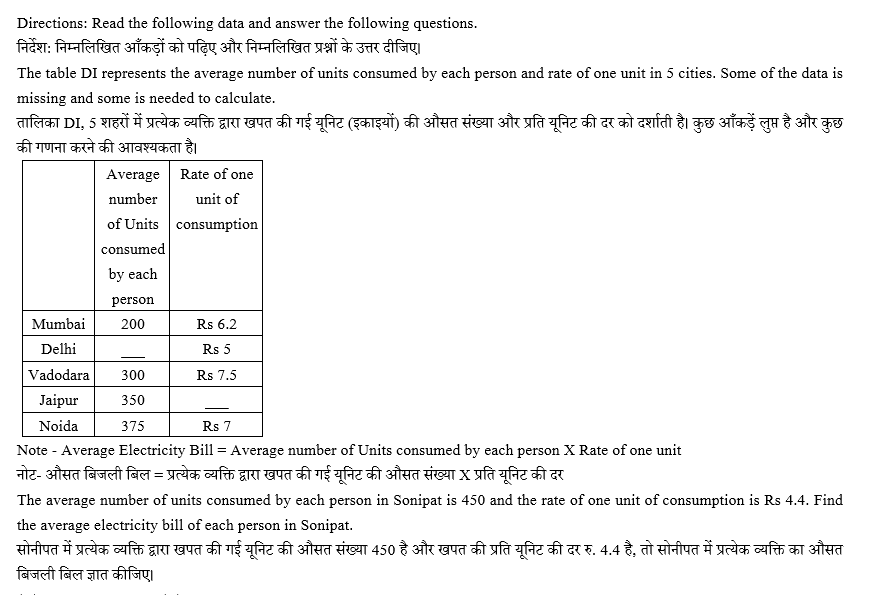Question 1: 
Question 2:
Direction: Find the next term in the series.
निर्देश: श्रृंखला का अगला पद ज्ञात करें।
13, 26, 78, 312, 1560, ?
Question 3:
Direction: Find the next term in the series.
निर्देश: श्रृंखला का अगला पद ज्ञात करें।
1157, 1164, 1175, 1188, 1205, ?
Question 4:
Direction: Find the next term in the series.
निर्देश: श्रृंखला का अगला पद ज्ञात करें।
38, 52, 94, 164, 262, ?
Question 5:
Direction: Find the next term in the series.
निर्देश: श्रृंखला का अगला पद ज्ञात करें।
40, 53, 68, 85, 104, ?
Question 6:
Direction: Find the next term in the series.
निर्देश: श्रृंखला का अगला पद ज्ञात करें।
294, 330, 394, 494, 638, ?
Question 7:
Direction: Find the next term in the series.
निर्देश: श्रृंखला का अगला पद ज्ञात करें।
10, 40, 200, 1200, 8400, ?
Question 8:
Ashok alone can complete a piece of work in 40 days while Isha and Sunny together can complete the 50% of the work in 6 days. Isha is twice as efficient as Ashok. What part of work done by Ashok and Sunny together in 6 days?
अशोक अकेले 40 दिनों में एक काम पूरा कर सकता है जबकि ईशा और सनी एक-साथ 50% काम 6 दिनों में पूरा कर सकते हैं। ईशा अशोक से दो गुना कुशल है। 6 दिनों में अशोक और सनी एक-साथ काम का कितना हिस्सा पूरा कर सकते हैं?
Question 9:
Average number of admission in a year in 5 IIT colleges Such as Delhi, Madras, Bombay, Roorkee and Kanpur is 740. Find the number of admission in Roorkee, if total 1645 students taken admission in Delhi and Bombay combined and the average number of admission in Madras and Kanpur is 695.
दिल्ली, मद्रास, बॉम्बे, रुड़की और कानपुर जैसे 5 IIT कॉलेजों में समान वर्ष में प्रवेश का औसत संख्या 740 है। यदि संयुक्त रूप से दिल्ली और बॉम्बे में प्रवेश लेने वाले विद्यार्थियों की संख्या 1645 है तथा मद्रास में और कानपुर में प्रवेश लेने वाले विद्यार्थियों का औसत संख्या 695 है, तो रुड़की में प्रवेश लेने वाले विद्यार्थियों की संख्या ज्ञात करें।
Question 10:
In the following question, two statements numbered I and II are given. On solving them, we get quantities I and II, respectively. Solve for both the quantities and choose the correct option.
निम्नलिखित प्रश्न में दो मात्राएँ संख्यांकित I और II दिए गए हैं। इन्हें हल करने पर हमें क्रमशः मात्राएँ I और II प्राप्त होती हैं। दोनों मात्राओं को हल कीजिए और सही विकल्प का चयन कीजिए।
Quantity I: 64
Quantity II: The respective ratio of values of P, Q and R is 3: 8: 11. If R is 64 more than P, then what is the value of Q?
मात्रा II: P, Q और R के मानों का संबंधित अनुपात 3: 8: 11 है। यदि R, P से 64 अधिक है, तो Q का मान कितना है?

